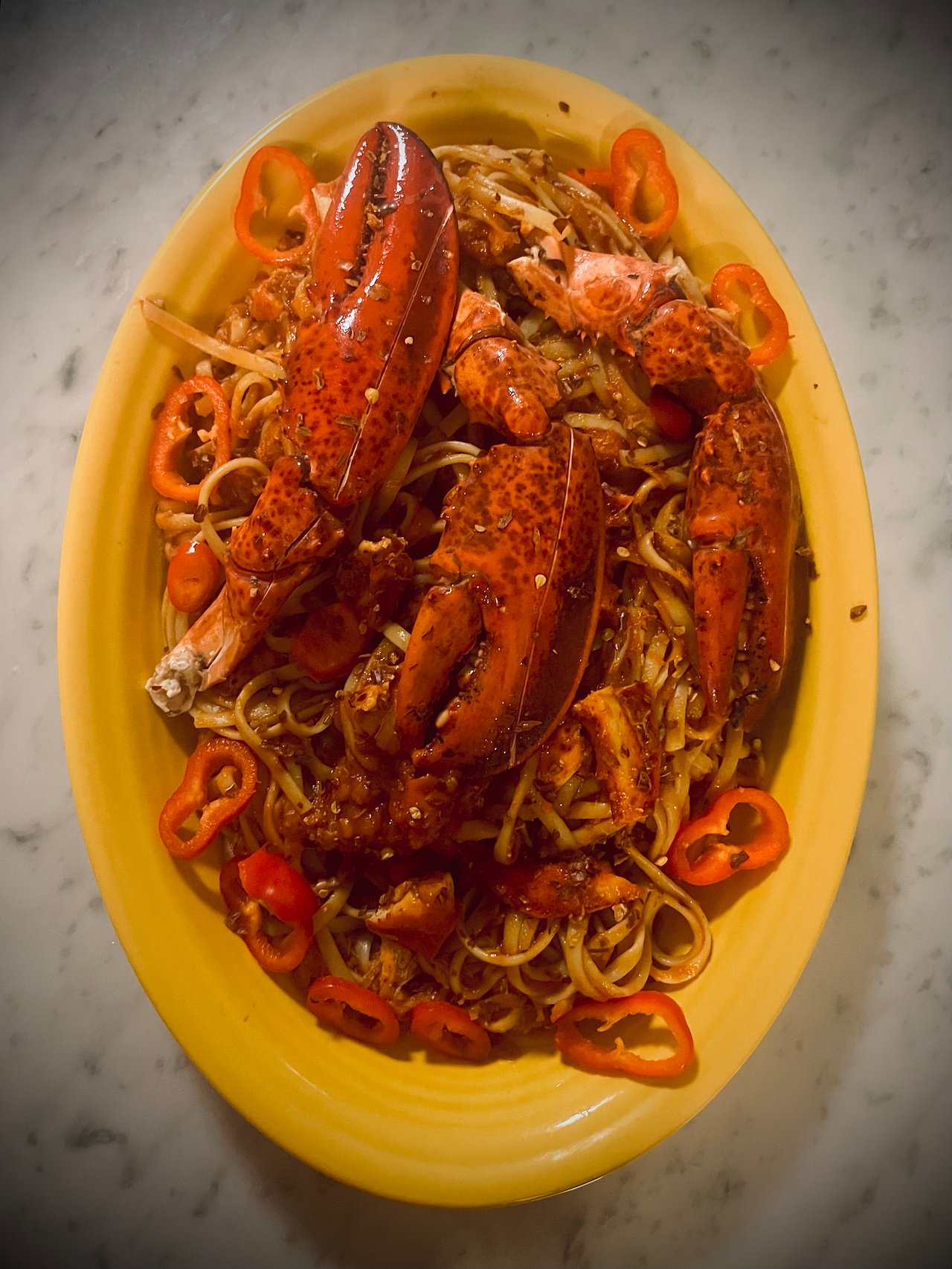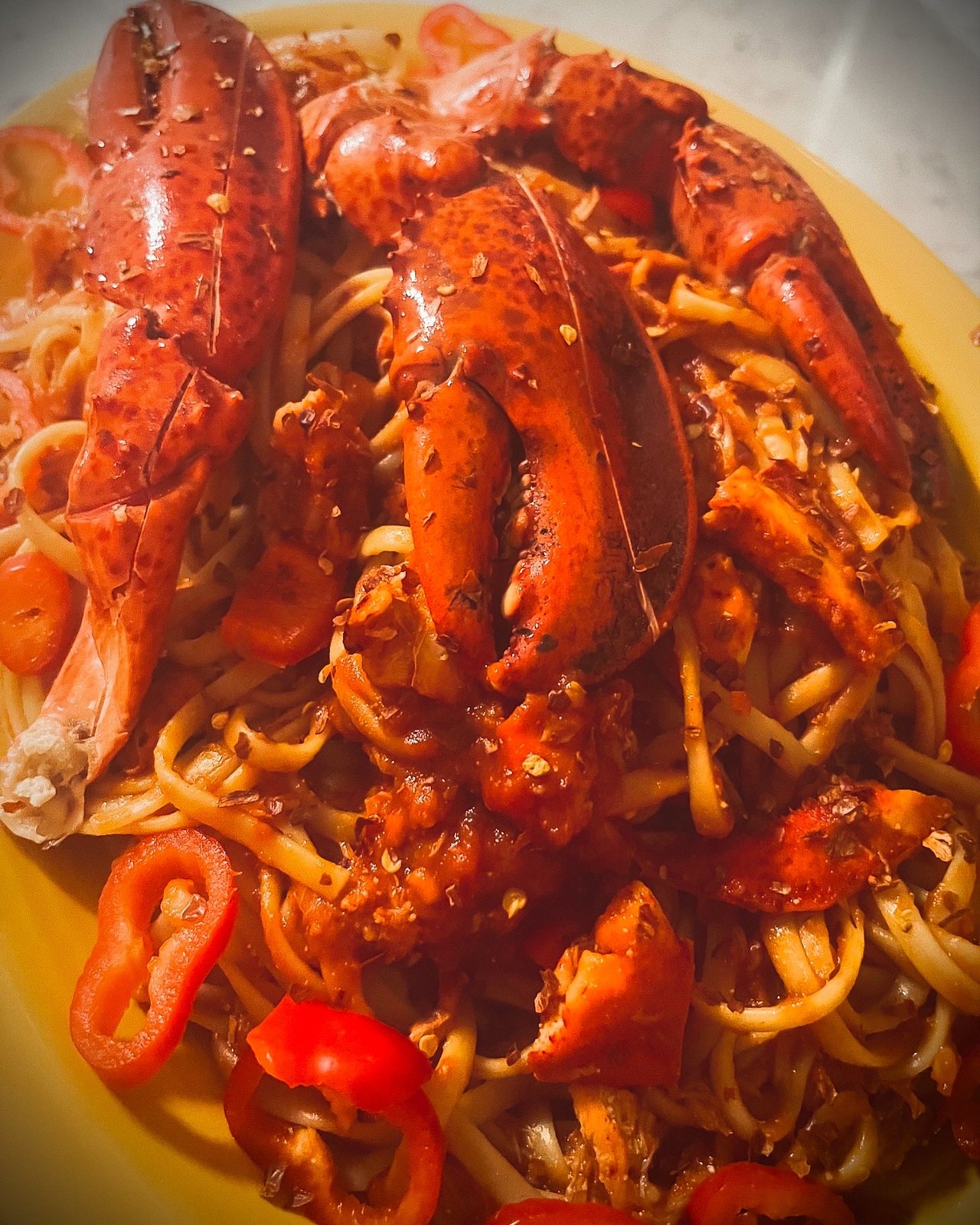
Peri-Peri Lobster Linguine
The fiery allure of peri-peri meets the ocean's opulence in a dish that is both indulgent and invigorating. This is peri-peri lobster linguine in spicy tomato sauce with fresh chilis—a culinary adventure that beckons to the epicurean in all of us.
The star of the show, the lobster, is a treasure from the sea, its succulent meat a luxurious counterpoint to the lively kick of peri-peri. This hot sauce, renowned for its vibrant heat derived from bird's eye chili peppers, is a marriage of flavors that is infused with an irresistible zest.
Paired with linguine, a pasta that gracefully holds the sauce with its slender form, each bite is a harmonious blend of textures. The spicy tomato sauce, simmered to perfection, envelops the pasta in a warm embrace of ripe tomatoes and aromatic spices, further elevated by the bold addition of fresh chilis.
This dish demonstrates the art of balancing heat and sweetness, where the freshness of the sea meets the earth's fiery bounty. It's a plate that promises an experience—daring, delicious and utterly unforgettable—a fitting homage to the adventurous palate of a true epicurean.
